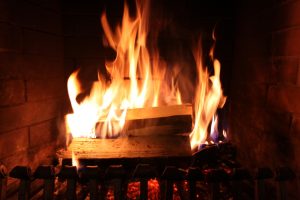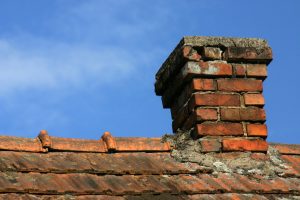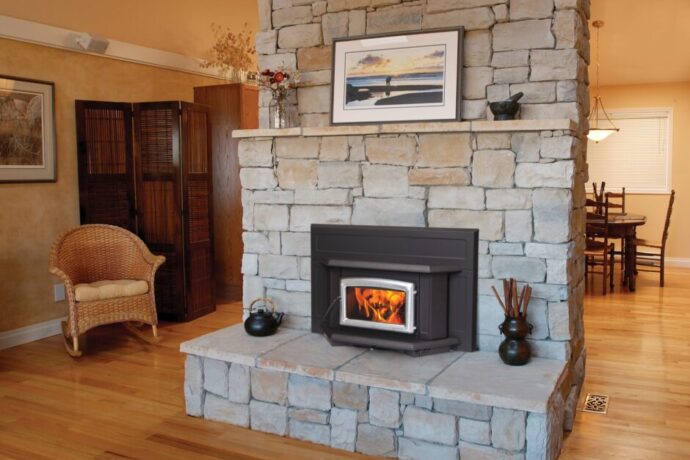This Hidden Mess Could Burn Your House Down
 So here’s what happens when you burn wood in your fireplace.
So here’s what happens when you burn wood in your fireplace.
When you start the fire, everything heats up (obviously). The mass of the fuel, the wood, is destroyed by the flames and most of it is released as heat energy. Some of the mass is left behind in the bottom of the fireplace, as ash. Some of the heat energy enters the room and keeps you warm. Some of the heat energy is carried up the chimney and off into the world. Some of it, a small but not inconsequential amount, adheres to the walls of your chimney as creosote.
Better quality wood burns cleaner, more completely, and produces better heat. A cleaner burn produces less creosote, so woods like Beech, Ash, Hawthorn, Yew and Thorn are excellent choices. If these varieties aren’t readily available, Cedar, Cherry, Maple, Oak and Pine also burn well, but produce slightly more residue. We don’t recommend burning Cherry Birch. Although it burns well and produces a nice flame, it is classified as a species at risk in Ontario and should be preserved.
Catch-22
While better quality wood burns cleaner and hotter, it still leaves behind creosote on the upward stretching walls of your chimney. Less than a poor quality wood, certainly, but creosote all the same. And creosote is highly flammable.
Yes, you have less of it plastered to your chimney walls, but the higher burning temperature of good quality wood means your risk of a chimney fire (the kind you don’t want) is still there.
If you burn lower quality wood, producing a lower temperature, you get a more significant creosote buildup. The lower temperature doesn’t protect you from sparking a creosote fire, because your chimney will be caked to the point of impeded airflow with the potently flammable byproduct.
Chimney Fires happen more often than you think
 You do all kinds of things to make sure your home is safe – double check to make sure the oven is off when you leave the house, check to make sure the back door is locked. Do you also check to make sure your chimney isn’t obstructed by a growing mound of oily creosote?
You do all kinds of things to make sure your home is safe – double check to make sure the oven is off when you leave the house, check to make sure the back door is locked. Do you also check to make sure your chimney isn’t obstructed by a growing mound of oily creosote?
The time to book your chimney sweeping service is now, before you actually start burning anything in your fireplace again.
Chimney sweeping services are very limited in Niagara region, and Stamford Fireplaces gets backed up on chimney sweeping service calls starting early in October. To avoid a delay of weeks or even months, we recommend you book your annual chimney sweep and any other fireplace maintenance soon.
Your chimney should be examined and cleared of creosote buildup every single year. If you haven’t already done it, get in touch with us to book your service as soon as you can. Even a gas fireplace needs annual cleaning!




